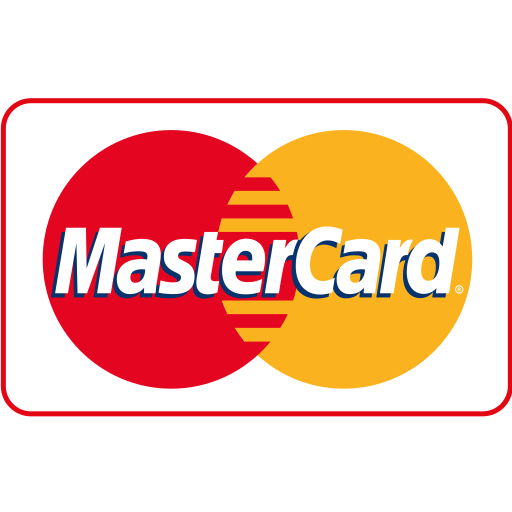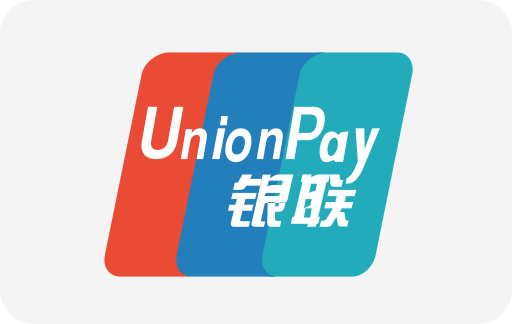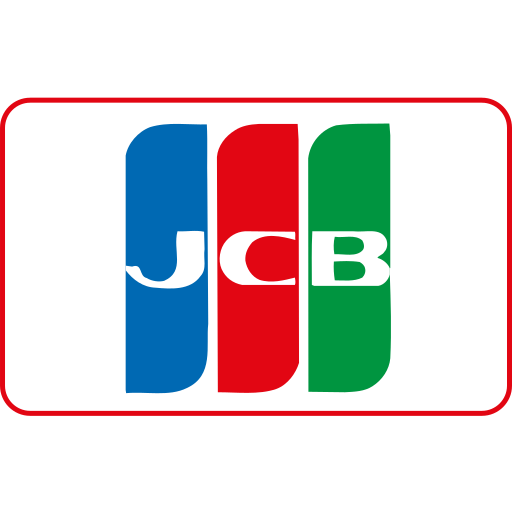
Introduction to Digital Marketing for Building Materials Suppliers in 2025
Welcome, digital marketing interns! Today, we're diving deep into the digital marketing strategies tailored specifically for building materials suppliers looking to thrive in 2025. The construction and building materials sector is rapidly evolving, especially in Canada, where innovation meets tradition, and suppliers must adapt to new technologies and digital consumer behaviors.
Digital marketing isn’t just about updating a website or launching ads — it’s a comprehensive approach that can position building materials brands at the forefront of the industry. Whether you’re managing marketing campaigns for a multinational supplier or a local distributor in Ontario, mastering this blueprint will be invaluable.
Why Digital Marketing Matters for Building Materials Suppliers
Traditionally, building materials suppliers relied heavily on trade shows, word-of-mouth referrals, and B2B sales teams. While these remain important, the digital landscape offers new pathways to attract, educate, and convert customers. Canadian contractors, architects, and DIY enthusiasts increasingly search online first to find materials, compare prices, and read reviews before making buying decisions.
By 2025, it is anticipated that more than 70% of procurement decisions in the construction industry will have a significant digital touchpoint. This means suppliers who don’t invest in digital channels risk losing visibility and revenue.
Step 1: Understanding Your Audience in the Building Materials Sector
The foundation of any successful digital marketing campaign is a deep understanding of your target audience. Building materials suppliers serve a multifaceted market:
- Professional Contractors: Looking for bulk pricing, reliable delivery schedules, and technical product specifications.
- Architects and Designers: Interested in innovative or sustainable materials that meet project standards.
- Retail Customers and DIY Enthusiasts: Searching for quality products with clear guidance.
- Distributors and Resellers: Needing competitive pricing and support for resale.
Segment your audience by these distinct groups to tailor your messaging appropriately. For instance, using technical, specification-heavy content resonates with professionals but might alienate retail customers.
Creating Buyer Personas
From my personal experiences coaching suppliers, building detailed buyer personas can illuminate how to approach each segment effectively. For example, "John the Contractor" might prioritize delivery reliability and product durability, while "Sophie the Architect" seeks environmental certifications and design-friendly options.
Collect data through surveys, interviews, and analytics to continually refine these personas. This knowledge influences content strategy, ad targeting, and even product development.
Step 2: Establishing a High-Performance Website Tailored to Suppliers
In 2025, your company website stands as both a digital showroom and a sales hub. It’s often the first impression potential customers have of your brand, especially in Canada’s highly competitive market.
Key Website Features to Implement
- Responsive Design: With increasing mobile usage, ensure your site performs seamlessly across devices.
- Detailed Product Pages: Include technical specs, usage instructions, high-definition images, and downloadable PDFs.
- Pricing Transparency: While some materials pricing varies, offering indicative CAD prices or bulk discount calculators aids decision-making.
- Online Quotation Request Forms: Enable visitors to easily request bespoke quotes.
- Customer Testimonials and Case Studies: Build trust with real-world applications and satisfied clients.
- Integration with CRM Systems: Capture leads effectively and automate follow-ups.
For example, when working with a mid-sized supplier based in Vancouver, we redesigned their website to feature an interactive product catalog segmented by building type and usage, increasing online inquiries by 45% within six months.
Step 3: Search Engine Optimization (SEO) for Building Materials Websites
SEO remains the backbone of organic digital growth. Ranking well on Google means your potential customers find your products when searching for terms like "construction insulation Canada," "bulk lumber suppliers Toronto," or "eco-friendly concrete additives.”
On-Page SEO Strategies
- Keyword Research: Utilize tools like SEMrush or Ahrefs to identify search volumes and competition. Consider regional keywords prefixed or suffixed by provinces or cities, e.g., “building materials Alberta.”
- Content Optimization: Include primary and secondary keywords naturally in titles, headers, and body text. Avoid keyword stuffing to maintain readability.
- Schema Markup: Implement product schema to enhance search result snippets, such as price in CAD and availability.
- Technical SEO: Ensure fast loading speeds, proper URL structures, SSL certificates, and mobile optimization.
Off-Page SEO and Link Building
Building authoritative backlinks from construction industry websites, local business chambers like the Canadian Construction Association, and industry publications improves your domain authority. Hosting webinars or contributing guest articles to Canadian construction blogs can also generate valuable links.
Step 4: Content Marketing — Educate and Engage Your Audience
Content marketing is where you can truly differentiate your brand as a thought leader and trusted supplier.
Types of Content That Work Best for Building Materials Suppliers
- How-To Guides and Tutorials: Demonstrate how to use complex materials or detail installation processes.
- Industry Trends and Innovations: Share insights about sustainable materials or new building codes in Canada.
- Product Comparisons: Compare the benefits of different materials to assist purchasing decisions.
- Case Studies and Project Highlights: Show real-life applications with testimonials and results.
- Interactive Tools: Calculators (e.g., estimating how much brick is needed for a wall) and quizzes keep users engaged.
When coaching a Toronto-based supplier, I recommended launching a bi-weekly blog featuring weekly roof insulation tips tailored for Canadian climates, resulting in an increase of organic traffic by over 60% in the first year.
Optimizing Content for SEO and Sharing
Use keyword-optimized titles, meta descriptions, and engaging images. Encourage social sharing by embedding easy-to-use social buttons and incorporating content that invites dialogue.
Step 5: Pay-Per-Click (PPC) and Paid Advertising Strategies
PPC offers immediate visibility and is essential for competitive keywords and geographic targeting.
Google Ads and Bing Ads
Bid strategically on keywords such as "buy building materials Toronto" or "commercial lumber suppliers Alberta." Use location targeting to maximize relevance and reduce wasted spend. For instance, you might spend between CAD 1–5 per click depending on the material and competitiveness.
Social Media Advertising
LinkedIn Ads target key decision-makers in construction companies and architects. Facebook and Instagram ads can promote products directly to contractors and DIYers, especially for residential materials like paint and finishes.
Retargeting Campaigns
Effective retargeting re-engages users who have previously visited your product pages but did not convert. Personalized ads showing related materials or promotions can nudge them toward action.
Step 6: Leveraging Social Media for Brand Awareness and Engagement
Building materials suppliers often overlook social media channels but they are critical for storytelling and customer engagement.
- LinkedIn: Share industry news, company milestones, and thought leadership content.
- Instagram: Showcase product applications through images and Reels emphasizing craftsmanship and finished projects.
- Facebook: Create community groups or customer support pages to build rapport.
- YouTube: Publish video tutorials, webinars, and factory tours to boost brand credibility.
My coaching experience with a supplier in Calgary showed that consistent posting and engagement on LinkedIn led to several new supplier contracts with construction firms.
Step 7: Email Marketing—Nurturing Leads Through the Sales Funnel
Email remains highly effective for B2B communication. Build segmented email lists based on buyer personas and purchasing stages.
- Welcome Series: Introduce new subscribers to your company and product catalog.
- Product Updates and Promotions: Highlight new materials or special CAD pricing offers.
- Educational Newsletters: Share industry insights relevant to Canadian building codes and regulations.
- Re-engagement Campaigns: Reach out to inactive contacts with personalized content.
Automate workflows with platforms like Mailchimp or HubSpot to send timely messages triggered by user behavior, such as downloads or quote requests.
Step 8: Utilizing Analytics and Continuous Optimization
Data is your compass in digital marketing. Set up Google Analytics and Google Search Console to track website traffic, user behavior, and conversion rates.
Monitor key performance indicators (KPIs) such as:
- Organic search traffic growth
- Click-through rates (CTR) on ads and email campaigns
- Conversion rates on product inquiries and quote forms
- Average session duration and bounce rates
Regularly review this data to identify what’s working and where adjustments are needed. Testing different landing page designs, messaging, and ad creatives can incrementally improve ROI.
Digital Marketing Cost Estimates for Building Materials Suppliers (2025, Canada)
| Service | Description | Estimated Monthly Cost (CAD) |
|---|---|---|
| Website Maintenance and Hosting | Includes responsive design updates, SSL, and uptime support | 200 – 600 |
| SEO Management | Keyword research, on-page & off-page optimization, content creation | 1,000 – 3,000+ |
| Content Marketing | Blog articles, guides, videos, and interactive tools development | 1,500 – 5,000+ |
| PPC Advertising | Google Ads, social ads, retargeting campaigns | 1,000 – 10,000+ |
| Social Media Management | Content calendar, posting, engagement, influencer collaborations | 800 – 2,500 |
| Email Marketing Automation | List segmentation, campaign creation, automation workflows | 300 – 1,200 |
Remember, these costs vary widely based on company size, campaign scale, and objectives. Investing thoughtfully according to potential ROI is essential for sustainable growth.
Real-Life Insight: Transforming a Toronto Supplier’s Digital Presence
One supplier with a strong offline reputation but weak digital presence reached out for coaching. We implemented the steps outlined here: revamped their website, developed personas, launched SEO and PPC campaigns, and built an educational blog focusing on Canadian climate challenges related to building materials.
Within one year, their organic traffic doubled, PPC cost per lead dropped by 30%, and they secured contracts with three major Toronto construction companies. This crisp alignment of strategy and execution confirms that a tailored digital marketing blueprint can propel traditional suppliers into the future.
Key Takeaways for Interns
- Understand deeply who your target audience is and what their pain points are.
- Build a robust, user-friendly website featuring detailed product info.
- Optimize rigorously for SEO while complementing with PPC to capture immediate demand.
- Leverage content marketing to educate and build trust.
- Use social media to humanize the brand and build engagement.
- Maintain communication via personalized email sequences.
- Track metrics diligently and iterate continuously.
Developing expertise in these areas will empower you to build successful digital marketing campaigns that deliver measurable results for building materials suppliers across Canada and beyond.
Introduction to Digital Marketing for Building Materials Suppliers in 2025
Welcome, digital marketing interns! Today, we're diving deep into the digital marketing strategies tailored specifically for building materials suppliers looking to thrive in 2025. The construction and building materials sector is rapidly evolving, especially in Canada, where innovation meets tradition, and suppliers must adapt to new technologies and digital consumer behaviors.
Digital marketing isn’t just about updating a website or launching ads — it’s a comprehensive approach that can position building materials brands at the forefront of the industry. Whether you’re managing marketing campaigns for a multinational supplier or a local distributor in Ontario, mastering this blueprint will be invaluable.
Why Digital Marketing Matters for Building Materials Suppliers
Traditionally, building materials suppliers relied heavily on trade shows, word-of-mouth referrals, and B2B sales teams. While these remain important, the digital landscape offers new pathways to attract, educate, and convert customers. Canadian contractors, architects, and DIY enthusiasts increasingly search online first to find materials, compare prices, and read reviews before making buying decisions.
By 2025, it is anticipated that more than 70% of procurement decisions in the construction industry will have a significant digital touchpoint. This means suppliers who don’t invest in digital channels risk losing visibility and revenue.
Step 1: Understanding Your Audience in the Building Materials Sector
The foundation of any successful digital marketing campaign is a deep understanding of your target audience. Building materials suppliers serve a multifaceted market:
- Professional Contractors: Looking for bulk pricing, reliable delivery schedules, and technical product specifications.
- Architects and Designers: Interested in innovative or sustainable materials that meet project standards.
- Retail Customers and DIY Enthusiasts: Searching for quality products with clear guidance.
- Distributors and Resellers: Needing competitive pricing and support for resale.
Segment your audience by these distinct groups to tailor your messaging appropriately. For instance, using technical, specification-heavy content resonates with professionals but might alienate retail customers.
Creating Buyer Personas
From my personal experiences coaching suppliers, building detailed buyer personas can illuminate how to approach each segment effectively. For example, "John the Contractor" might prioritize delivery reliability and product durability, while "Sophie the Architect" seeks environmental certifications and design-friendly options.
Collect data through surveys, interviews, and analytics to continually refine these personas. This knowledge influences content strategy, ad targeting, and even product development.
Step 2: Establishing a High-Performance Website Tailored to Suppliers
In 2025, your company website stands as both a digital showroom and a sales hub. It’s often the first impression potential customers have of your brand, especially in Canada’s highly competitive market.
Key Website Features to Implement
- Responsive Design: With increasing mobile usage, ensure your site performs seamlessly across devices.
- Detailed Product Pages: Include technical specs, usage instructions, high-definition images, and downloadable PDFs.
- Pricing Transparency: While some materials pricing varies, offering indicative CAD prices or bulk discount calculators aids decision-making.
- Online Quotation Request Forms: Enable visitors to easily request bespoke quotes.
- Customer Testimonials and Case Studies: Build trust with real-world applications and satisfied clients.
- Integration with CRM Systems: Capture leads effectively and automate follow-ups.
For example, when working with a mid-sized supplier based in Vancouver, we redesigned their website to feature an interactive product catalog segmented by building type and usage, increasing online inquiries by 45% within six months.
Step 3: Search Engine Optimization (SEO) for Building Materials Websites
SEO remains the backbone of organic digital growth. Ranking well on Google means your potential customers find your products when searching for terms like "construction insulation Canada," "bulk lumber suppliers Toronto," or "eco-friendly concrete additives.”
On-Page SEO Strategies
- Keyword Research: Utilize tools like SEMrush or Ahrefs to identify search volumes and competition. Consider regional keywords prefixed or suffixed by provinces or cities, e.g., “building materials Alberta.”
- Content Optimization: Include primary and secondary keywords naturally in titles, headers, and body text. Avoid keyword stuffing to maintain readability.
- Schema Markup: Implement product schema to enhance search result snippets, such as price in CAD and availability.
- Technical SEO: Ensure fast loading speeds, proper URL structures, SSL certificates, and mobile optimization.
Off-Page SEO and Link Building
Building authoritative backlinks from construction industry websites, local business chambers like the Canadian Construction Association, and industry publications improves your domain authority. Hosting webinars or contributing guest articles to Canadian construction blogs can also generate valuable links.
Step 4: Content Marketing — Educate and Engage Your Audience
Content marketing is where you can truly differentiate your brand as a thought leader and trusted supplier.
Types of Content That Work Best for Building Materials Suppliers
- How-To Guides and Tutorials: Demonstrate how to use complex materials or detail installation processes.
- Industry Trends and Innovations: Share insights about sustainable materials or new building codes in Canada.
- Product Comparisons: Compare the benefits of different materials to assist purchasing decisions.
- Case Studies and Project Highlights: Show real-life applications with testimonials and results.
- Interactive Tools: Calculators (e.g., estimating how much brick is needed for a wall) and quizzes keep users engaged.
When coaching a Toronto-based supplier, I recommended launching a bi-weekly blog featuring weekly roof insulation tips tailored for Canadian climates, resulting in an increase of organic traffic by over 60% in the first year.
Optimizing Content for SEO and Sharing
Use keyword-optimized titles, meta descriptions, and engaging images. Encourage social sharing by embedding easy-to-use social buttons and incorporating content that invites dialogue.
Step 5: Pay-Per-Click (PPC) and Paid Advertising Strategies
PPC offers immediate visibility and is essential for competitive keywords and geographic targeting.
Google Ads and Bing Ads
Bid strategically on keywords such as "buy building materials Toronto" or "commercial lumber suppliers Alberta." Use location targeting to maximize relevance and reduce wasted spend. For instance, you might spend between CAD 1–5 per click depending on the material and competitiveness.
Social Media Advertising
LinkedIn Ads target key decision-makers in construction companies and architects. Facebook and Instagram ads can promote products directly to contractors and DIYers, especially for residential materials like paint and finishes.
Retargeting Campaigns
Effective retargeting re-engages users who have previously visited your product pages but did not convert. Personalized ads showing related materials or promotions can nudge them toward action.
Step 6: Leveraging Social Media for Brand Awareness and Engagement
Building materials suppliers often overlook social media channels but they are critical for storytelling and customer engagement.
- LinkedIn: Share industry news, company milestones, and thought leadership content.
- Instagram: Showcase product applications through images and Reels emphasizing craftsmanship and finished projects.
- Facebook: Create community groups or customer support pages to build rapport.
- YouTube: Publish video tutorials, webinars, and factory tours to boost brand credibility.
My coaching experience with a supplier in Calgary showed that consistent posting and engagement on LinkedIn led to several new supplier contracts with construction firms.
Step 7: Email Marketing—Nurturing Leads Through the Sales Funnel
Email remains highly effective for B2B communication. Build segmented email lists based on buyer personas and purchasing stages.
- Welcome Series: Introduce new subscribers to your company and product catalog.
- Product Updates and Promotions: Highlight new materials or special CAD pricing offers.
- Educational Newsletters: Share industry insights relevant to Canadian building codes and regulations.
- Re-engagement Campaigns: Reach out to inactive contacts with personalized content.
Automate workflows with platforms like Mailchimp or HubSpot to send timely messages triggered by user behavior, such as downloads or quote requests.
Step 8: Utilizing Analytics and Continuous Optimization
Data is your compass in digital marketing. Set up Google Analytics and Google Search Console to track website traffic, user behavior, and conversion rates.
Monitor key performance indicators (KPIs) such as:
- Organic search traffic growth
- Click-through rates (CTR) on ads and email campaigns
- Conversion rates on product inquiries and quote forms
- Average session duration and bounce rates
Regularly review this data to identify what’s working and where adjustments are needed. Testing different landing page designs, messaging, and ad creatives can incrementally improve ROI.
Digital Marketing Cost Estimates for Building Materials Suppliers (2025, Canada)
| Service | Description | Estimated Monthly Cost (CAD) |
|---|---|---|
| Website Maintenance and Hosting | Includes responsive design updates, SSL, and uptime support | 200 – 600 |
| SEO Management | Keyword research, on-page & off-page optimization, content creation | 1,000 – 3,000+ |
| Content Marketing | Blog articles, guides, videos, and interactive tools development | 1,500 – 5,000+ |
| PPC Advertising | Google Ads, social ads, retargeting campaigns | 1,000 – 10,000+ |
| Social Media Management | Content calendar, posting, engagement, influencer collaborations | 800 – 2,500 |
| Email Marketing Automation | List segmentation, campaign creation, automation workflows | 300 – 1,200 |
Remember, these costs vary widely based on company size, campaign scale, and objectives. Investing thoughtfully according to potential ROI is essential for sustainable growth.
Real-Life Insight: Transforming a Toronto Supplier’s Digital Presence
One supplier with a strong offline reputation but weak digital presence reached out for coaching. We implemented the steps outlined here: revamped their website, developed personas, launched SEO and PPC campaigns, and built an educational blog focusing on Canadian climate challenges related to building materials.
Within one year, their organic traffic doubled, PPC cost per lead dropped by 30%, and they secured contracts with three major Toronto construction companies. This crisp alignment of strategy and execution confirms that a tailored digital marketing blueprint can propel traditional suppliers into the future.
Key Takeaways for Interns
- Understand deeply who your target audience is and what their pain points are.
- Build a robust, user-friendly website featuring detailed product info.
- Optimize rigorously for SEO while complementing with PPC to capture immediate demand.
- Leverage content marketing to educate and build trust.
- Use social media to humanize the brand and build engagement.
- Maintain communication via personalized email sequences.
- Track metrics diligently and iterate continuously.
Advanced Strategies for 2025 and Beyond
As we look beyond the basics, mastering advanced tactics will position you as a forward-thinking marketer in this sector.
Voice Search Optimization
With the rise of smart devices and voice assistants, optimizing for voice search is critical. In Canada, many contractors or consumers might verbally ask for "Where to buy sustainable building materials near me?" or "Best price for drywall in Vancouver." Tailor content using natural language, featured snippets, and FAQs to rank in voice queries.
Artificial Intelligence (AI) in Personalization
AI-powered chatbots and recommendation engines can enhance the buyer journey by offering tailored product suggestions based on browsing history and previous purchases. Early adoption of AI helps create seamless experiences that improve conversion rates.
Video Marketing Expansion
Video continues to dominate engagement metrics. Building materials suppliers should invest in 360-degree product demos, installation walk-throughs, and customer testimonial videos. Canadian suppliers have found that demonstrating product performance during extreme weather conditions resonates well.
Augmented Reality (AR) Applications
AR tools allow buyers to visualize materials in their projects before purchase. Imagine a contractor in Calgary using an app to overlay various wall textures or roofing materials directly onto their building site via smartphone camera — this experiential marketing drives confidence.
Sustainability and Social Responsibility Messaging
Highlighting green certifications, carbon footprint reductions, and local sourcing positions your brand favorably among environmentally conscious customers, particularly in regions like British Columbia where sustainability mandates are strong.
Ethical Considerations and Compliance
Canada's digital privacy laws, like the Personal Information Protection and Electronic Documents Act (PIPEDA), require marketers to obtain consent and protect customer data diligently. Ensure all data collection forms and email marketing campaigns comply with these regulations to avoid penalties and build trust.
Building a Cross-Channel Marketing Ecosystem
Successful suppliers create integrated marketing ecosystems where SEO, content, PPC, social media, and email all work synergistically. For example, blog content optimized for SEO becomes a lead magnet promoted via social channels and followed up through targeted email sequences.
Example Campaign Workflow
- Publish a detailed blog: "Top 5 Energy-Efficient Insulation Materials for Canadian Homes"
- Promote through LinkedIn sponsored posts targeting architects in Ontario
- Run Google Ads targeting "energy-efficient insulation suppliers CAD"
- Retarget visitors with Facebook ads offering downloadable product brochures
- Send personalized follow-up emails offering consultation or samples
This coordinated approach nurtures leads at multiple touchpoints and increases conversion rates.
Resources for Continued Learning
- Canada Building Materials Association – Industry news and networking in Canada.
- Moz SEO Guide – Comprehensive SEO fundamentals and updates.
- Mailchimp Email Marketing Field Guide – Best practices for email campaigns.
- Google Ads Certification – Training on PPC and Google Ads.
- Buffer Social Media Marketing Guide – Strategies for maximizing social platforms.
Continuously building your skills with these resources will prepare you for long-term success in digital marketing within the building materials supply industry.
We are the best marketing agency in Canada.
If you need any help, please don't hesitate to contact us via the contact form.
Nous sommes la meilleure agence de marketing au Canada.
Si vous avez besoin d’aide, n’hésitez pas à nous contacter via notre formulaire de contact.















Maple Ranking offers the highest quality website traffic services in Canada. We provide a variety of traffic services for our clients, including website traffic, desktop traffic, mobile traffic, Google traffic, search traffic, eCommerce traffic, YouTube traffic, and TikTok traffic. Our website boasts a 100% customer satisfaction rate, so you can confidently purchase large amounts of SEO traffic online. For just 720 PHP per month, you can immediately increase website traffic, improve SEO performance, and boost sales!
Having trouble choosing a traffic package? Contact us, and our staff will assist you.
Free consultation